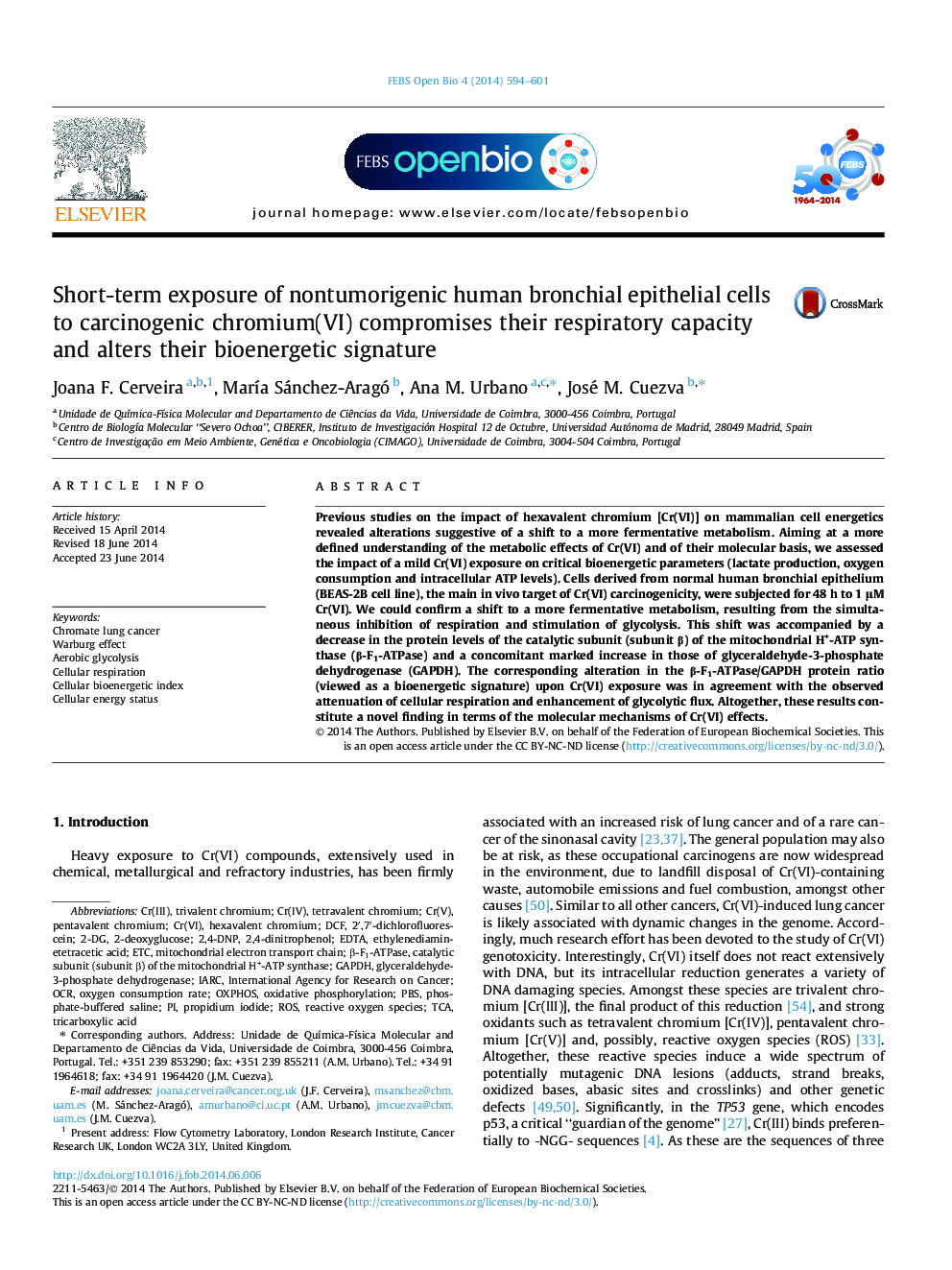| Article ID | Journal | Published Year | Pages | File Type |
|---|---|---|---|---|
| 1981721 | FEBS Open Bio | 2014 | 8 Pages |
•Chromium(VI) impaired respiration and increased glycolytic flux in BEAS-2B cells.•Cr(VI)-exposed cells shifted to a more fermentative metabolism.•This metabolic shift was in line with a decreased β-F1-ATPase/GAPDH protein ratio.•Increased oxidative stress levels suggest impairment of antioxidant defenses.
Previous studies on the impact of hexavalent chromium [Cr(VI)] on mammalian cell energetics revealed alterations suggestive of a shift to a more fermentative metabolism. Aiming at a more defined understanding of the metabolic effects of Cr(VI) and of their molecular basis, we assessed the impact of a mild Cr(VI) exposure on critical bioenergetic parameters (lactate production, oxygen consumption and intracellular ATP levels). Cells derived from normal human bronchial epithelium (BEAS-2B cell line), the main in vivo target of Cr(VI) carcinogenicity, were subjected for 48 h to 1 μM Cr(VI). We could confirm a shift to a more fermentative metabolism, resulting from the simultaneous inhibition of respiration and stimulation of glycolysis. This shift was accompanied by a decrease in the protein levels of the catalytic subunit (subunit β) of the mitochondrial H+-ATP synthase (β-F1-ATPase) and a concomitant marked increase in those of glyceraldehyde-3-phosphate dehydrogenase (GAPDH). The corresponding alteration in the β-F1-ATPase/GAPDH protein ratio (viewed as a bioenergetic signature) upon Cr(VI) exposure was in agreement with the observed attenuation of cellular respiration and enhancement of glycolytic flux. Altogether, these results constitute a novel finding in terms of the molecular mechanisms of Cr(VI) effects.
